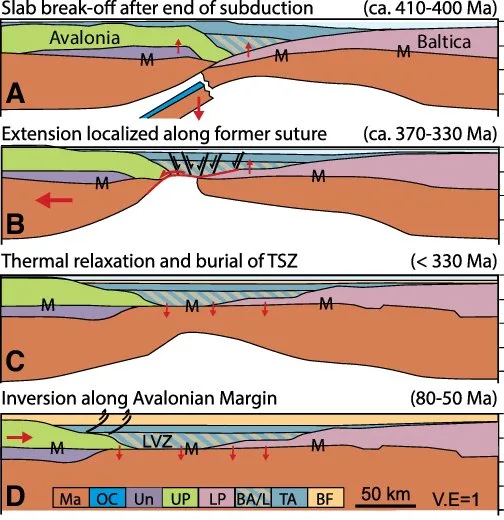The Thor suture zone: From subduction to intraplate basin setting
DOI http://dx.doi.org/10.1130/G37958.1 Abstract The crustal seismic velocity structure of northwestern Europe shows a low P-wave velocity zone (LVZ) in the lower crust along the Caledonian Thor suture zone (TSZ) that cannot be easily attributed to Avalonia or Baltica plates abutting the TSZ. The LVZ appears to correspond to a hitherto unrecognized crustal segment (accretionary complex) that separates Avalonia from Baltica, explaining well the absence of Avalonia further east. Consequently, the northern boundary of Avalonia is shifted ∼150 km southward. Our interpretation, based on analysis of deep seismic profiles, places the LVZ in a consistent crustal domain interpretation. A comparison with present-day examples of the Kuril and Cascadia subduction zones suggests that the LVZ separating Avalonia from Baltica is composed of remnants of the Caledonian accretionary complex. If so, the present-day geometry probably originates from pre-Variscan extension and eduction during Devonian–Carboniferous backarc extension. The reinterpretation of deep crustal zonation provides a … Read moreThe Thor suture zone: From subduction to intraplate basin setting


